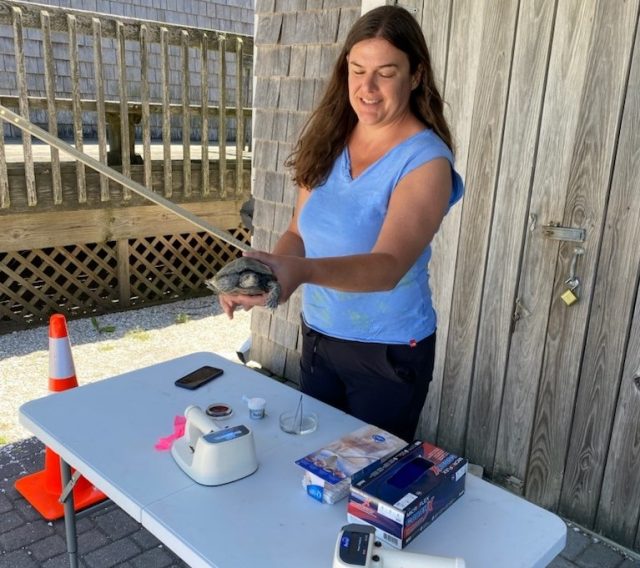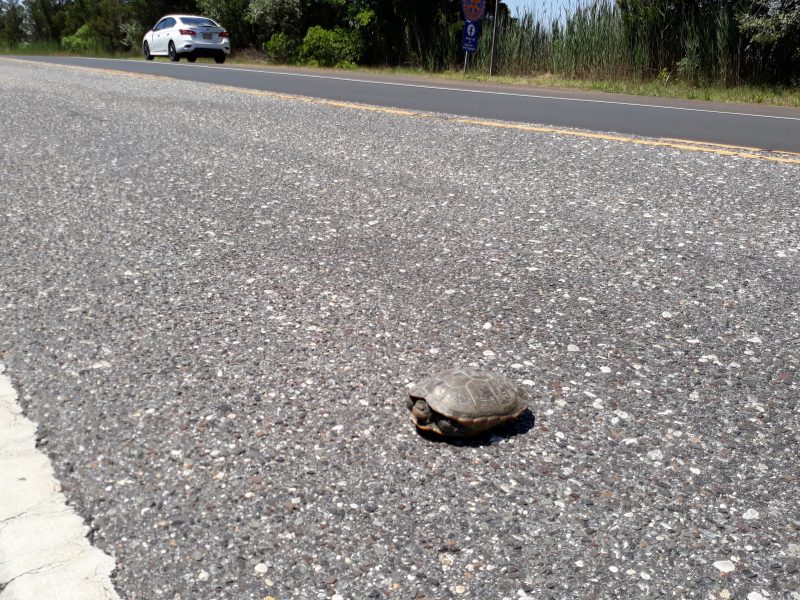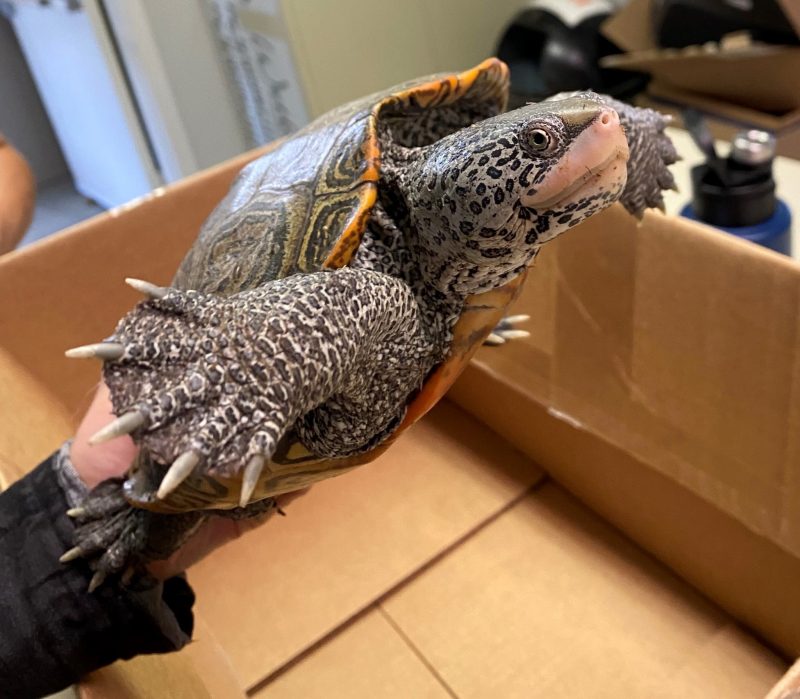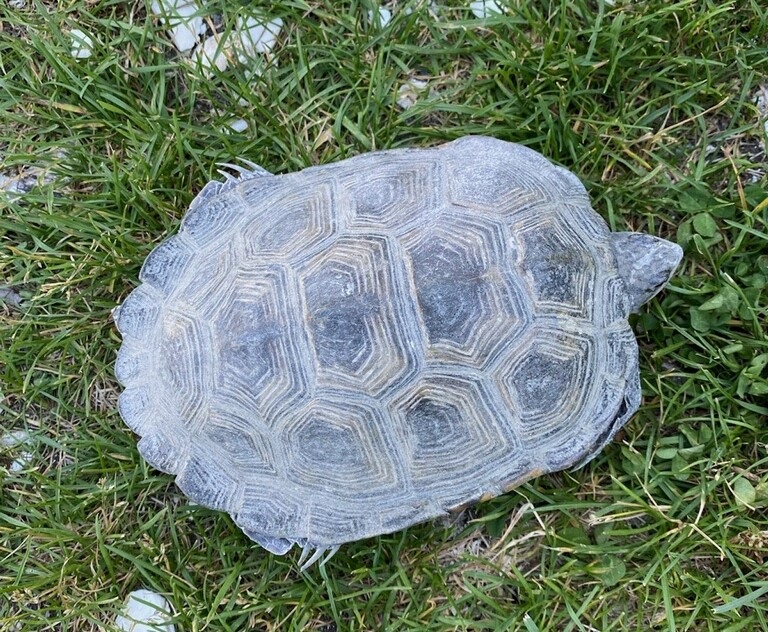
By MADDY VITALE
They are called “mascots” of South Jersey. They are reptiles, but they aren’t exactly feared like snakes. In fact, some people call them cute.
They are diamondback terrapins. And now is the time of year when homeowners and motorists are seeing them as they leave the marshlands in search of sandy soil to lay their eggs.
Experts say to leave them be, unless they appear in distress. If on the road, only move them if it can be done safely. And if so, they should always be placed in the direction they are going.
“They are not endangered, but they are a species of special concern,” Devin Griffiths, marketing specialist at the Wetlands Institute in Stone Harbor, said Sunday. “They are a species that we like to watch out for because they come into contact with people so frequently during nesting season.”
Terrapin season begins in May and goes typically to August. The nesting season timing couldn’t be worse, considering they live in salt marshes and brackish waters, he noted.
Each year, in Ocean City and surrounding communities, there are crushed terrapins littering the roads. Dead turtles are often found at nesting season along a stretch of Bay Avenue on the Ocean City side in an area near Corson’s Inlet Bridge and the Rush Chattin Bridge.
“Unfortunately, the terrapin nesting season also coincides with the busy tourist season and the season is May to August. It really picks up at the shore during that time. People need to watch on the roadways, especially entering the barrier islands,” Griffiths said, emphasizing that people need to use caution and only help a terrapin off the roadway if it is safe for the motorist.

While diamondback terrapins can live up to 30 to 40 years, traffic, roadwork and the fishing industry pose dangers to their survival.
Only one egg in a thousand grows up to be an adult turtle.
This week, people on social media posted photos of what appears to be terrapin nests and terrapins on the roads.
While being interviewed by OCNJDaily.com, Griffiths was approached by a couple who asked him what to do with a diamondback that was on the roadway near the exit to the Wetlands Institute in Stone Harbor.
“A couple leaving the institute approached me about the terrapin. She is in good hands now. Dr. Lisa Ferguson weighed her and measured and tagged her. Now she is off to do her thing,” Griffiths said.
He said that the couple, like so many other caring people, really respects the turtles.
“What I find really encouraging is that people really do pay attention and they really do care. I have seen people stop and clap for them when they are safely delivered to the other side of the road.”
There is one terrapin who was tagged many years ago. They call her Y2K because she was released at the Wetlands Institute in 2000. She returned in 2007 for nesting season and has been back 20 times, according to the institute’s Facebook page.
“She’s been involved in our mark-recapture and radio telemetry projects several times over the last 22 years, helping us learn about her nesting habits and movements during the season,” according to the post.
Griffiths said that there are groups, including Sea Isle Terrapin Rescue run by Steve Ahern and his wife, Susan Ahern, that help the turtles to safely nest.

There are people in Ocean City who also volunteer their time and efforts to help the turtles, he noted.
“We are just thrilled that there are so many people who do the road patrols to watch out for these terrapins,” he added.
It can take anywhere from eight to 14 weeks for the terrapin eggs to hatch. Since the terrapins typically nest in sandy soil, places such as the beaches and dunes give them a safe place to lay their eggs.
Griffiths said that at the Wetlands Institute the employees use enclosures to protect the nesting turtles from predators.
If people find an injured terrapin, they should call the Wetlands Institute at (609) 368-1211.
“We are a fantastic resource for what to do with terrapins and where to take them,” Griffiths said. “People should definitely feel free to reach out to us for what to do if they find one.”
The terrapins are a special creature, respected and even loved, he noted.
“They only live in salt marshes. They only live in brackish environments. They exist up and down the coast in the salt marshes,” Griffiths said. “The terrapins are really special creatures that we have here. The terrapin is like the mascot of this area. There is a point of pride. New York City doesn’t have these turtles. Boston doesn’t have these turtles. South Jersey has these turtles.”






